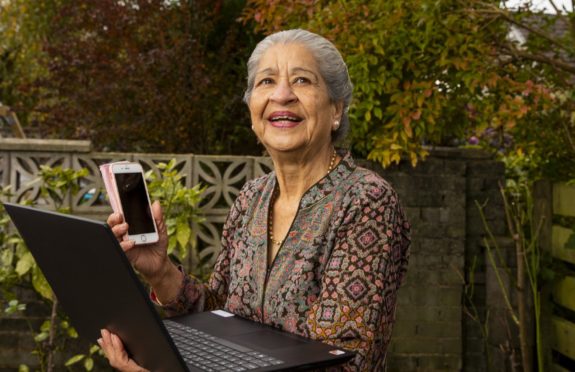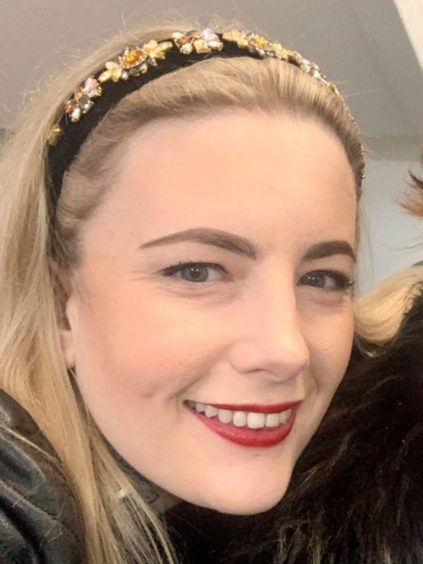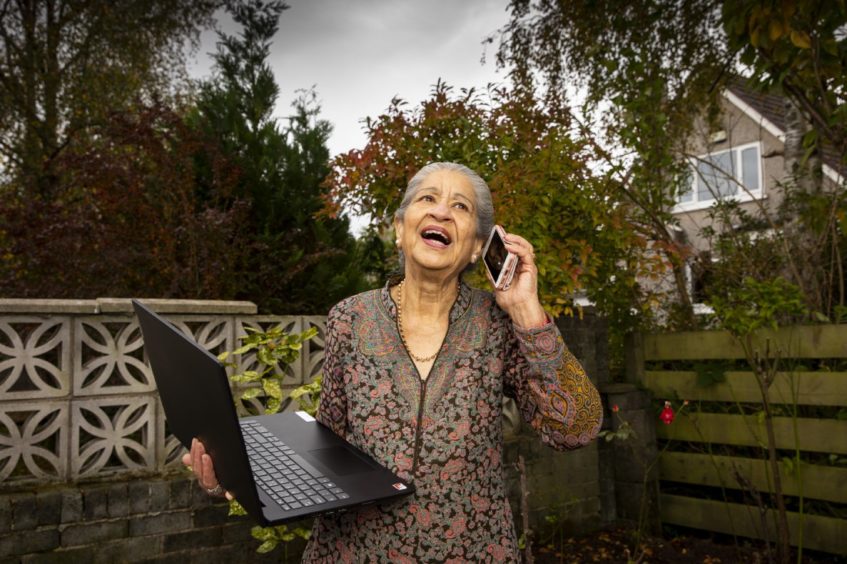
David Attenborough logged onto Instagram for the first time last month at 94, proving age is no barrier when it comes to technology.
And a new wave of silver surfers has been doing the same since Covid hit. Stuck in lockdown – and often solitude – over the past six months, a growing number of OATs (Old Age Techies) have signed up to the social media revolution and started connecting with family and friends on video calls. It is a means of staying in touch and combating loneliness.
Over-50s social network Silversurfers now has more than one million members, with 125,000 joining since March.
Age Scotland’s chief executive, Brian Sloan, said: “There’s no doubt the pandemic has had a devastating impact on older people’s mental health and well-being. But one glimmer of hope is that more older people are getting online and embracing technology to stay in touch.
“At the start of lockdown, we set up a Friendship Line, which has been taking heartbreaking calls daily from older people starved of human contact. Social media and video calling aren’t substitutes for face-to-face contact but, for someone unable to leave their home, chatting to friends and family online can be a lifeline.”
Age Scotland volunteers have been offering online training to people in their 70s, 80s and 90s who have never used computers. They’re now ordering food deliveries, shopping and prescriptions online, as well as connecting with friends and relatives.
Martin Lock, chief executive of Silversurfers, added: “We’re seeing more over-50s online than ever, with a massive increase during lockdown. Being online is an important asset for our ageing population.”
But what about members of the older generation who don’t have, or can’t afford, laptops or mobile phones? Well, Jenn Nimmo Smith is helping to alleviate that.
Since lockdown began, the music industry publicist’s contact with her mum Kathleen, who lives in a care home, has largely been limited to daily video calls. This was only possible because she bought her mum, who had a catastrophic stroke 10 years ago, an iPad. But she soon realised not all residents were so fortunate. “I call my mum every day without fail,” Jenn, 33, said. “Of course, with Covid and her being high risk, I want to know she’s OK.
“But not many other residents in the care home have access to a computer. That’s when I had the idea of asking people to donate old devices, and supplying them to care homes to help residents stay connected.”
Jenn, 34, launched the Tech Connection Network a few months ago along with Scottish Care, and has since supplied more than 100 laptops, smart phones, smart TVs and tablets to care homes across the country.
“We’ve had some amazing feedback about the difference it has been making,” Jenn, from Glasgow, said. “Of course, it’s not a long-term substitute for physical contact, but it is bridging the gap for now. It is helping mum – and doing the same for others, too. The response has been heartwarming.”
Zoom has been a fantastic lifeline for lonely people
Brij Gandhi relies on a 20-year-old laptop to type up minutes from her meetings.
However, during lockdown she has mastered Zoom and now hosts weekly video meetings, as well as yoga and cooking sessions.
The 81-year-old runs the Scottish Indian Mahila Group in Glasgow. It’s a social group for older women of Indian heritage. Many of them live alone and don’t have family close by.
But lockdown spelled an end to meeting up in person, forcing the women to turn to technology as a means of staying in touch.
Over the past few months, Brij has learned how to work Zoom and trained her fellow group members in the art of virtual meetings and they now have weekly catch ups.
“Many had been feeling quite isolated at home, and this has been a lifeline for them,” grandmother of four Brij said.
“Of course, we make mistakes. On the first call, nobody could hear each other. It was too noisy as we didn’t know how to mute, but we are getting there.
“It is fantastic for all of us. Lockdown means we haven’t had many visitors. I live alone and many of my family members are in London, so I now use Zoom to call them and it means I can see the grandchildren, which is lovely.
“I also know how to use email, have lots of group chats on WhatsApp. I wouldn’t say I’m a technological whizz just yet – I ordered a couple of pairs of shoes online and it was a bit of a disaster! – but I’m trying.”

Enjoy the convenience of having The Sunday Post delivered as a digital ePaper straight to your smartphone, tablet or computer.
Subscribe for only £5.49 a month and enjoy all the benefits of the printed paper as a digital replica.
Subscribe © Supplied
© Supplied © Jamie Williamson
© Jamie Williamson